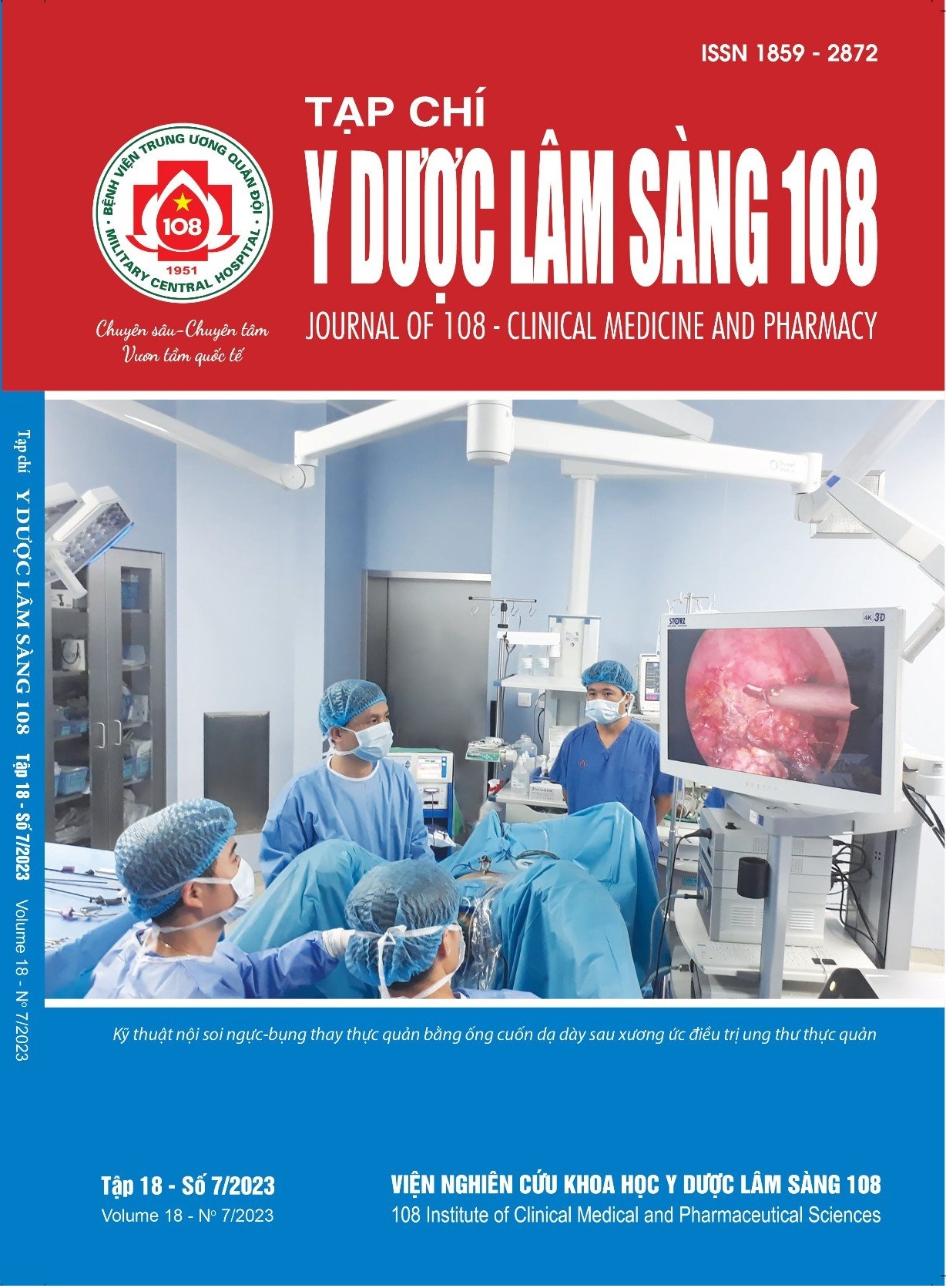A systematic review on effectiveness of tongue cleaning methods in tongue coating removal
Main Article Content
Keywords
Abstract
Objective: A systematic review to evaluate the effectiveness of tongue coating removal by applying some techniques: Tongue brushing, Tongue Scraping, Toothbrush, Mouthwash (Mouthrinse), or a combination of the above methods. Subject and method: The searching process was carried out on electronic databases: PubMed-MEDLINE, Embase, and Cochrane-CENTRAL. Articles were published from January 2012 to the end of July 2023. The quality of the articles was scored using the Cochrane Risk of Bias Tool for RCTs. The Winkel tongue plaque index (WTCI) in the studies was the outcome variable of interest. Result: A total of 9 studies that met the inclusion criteria were included in the analysis, including 2 clinical trials and 7 randomized controlled trials. There are 2 studies that reduced tongue coating from severe to moderate (T0: 9.0 ± 1.96, T1: 7.07 ± 1.75 & T0: 9.32 ± 1.44, T2: 7.21 ± 1.13) and 2 studies reduced tongue coating from moderate to mild (T0: 5.33 ± 3.32, T1: 3.44 ± 2.60; T0: 5.78 ± 3.35, T1: 2.89 ± 3.52 & T0: 6.180 ± 2.844, T1: 3.850 ± 2.190). Conclusion: Tongue cleaning methods using a tongue scraping, tongue brush, or toothbrush all significantly reduce the amount of plaque on the dorsal surface of the tongue, however there is no significant difference in the effectiveness of the methods. The use of mouthwash has no significant effect in tongue coating removal.
Article Details
References
2. Wilbert SA, Mark Welch JL, Borisy GG (2020) Spatial ecology of the human tongue dorsum microbiome. Cell Rep 30(12): 4003-4015.
3. Page MJ, McKenzie JE, Bossuyt PM, Boutron I, Hoffmann TC, Mulrow CD, Shamseer L, Tetzlaff JM, Akl EA, Brennan SE, Chou R, Glanville J, Grimshaw JM, Hróbjartsson A, Lalu MM, Li T, Loder EW, Mayo-Wilson E, McDonald S, McGuinness LA, Stewart LA, Thomas J, Tricco AC, Welch VA, Whiting P, Moher D (2021) The PRISMA 2020 statement: An updated guideline for reporting systematic reviews. BMJ 372:n71. doi: 10.1136/bmj.n71.
4. Dwivedi V, Torwane NA, Tyagi S, Maran S (2019) Effectiveness of various tongue cleaning aids in the reduction of tongue coating and bacterial load: A comparative clinical study. J Contemp Dent Pract 20(4): 444-448.
5. Higgins JPT, Altman DG, Gøtzsche PC, Jüni P, Moher D, Oxman AD et al (2011) The Cochrane Collaboration’s tool for assessing risk of bias in randomised trials. The BMJ 343: 5928.
6. Acar B, Berker E, Tan Ç, İlarslan YD, Tekçiçek M, Tezcan İ (2019) Effects of oral prophylaxis including tongue cleaning on halitosis and gingival inflammation in gingivitis patients-a randomized controlled clinical trial. Clin Oral Investig 23(4): 1829-1836.
7. Laleman I, Koop R, Teughels W, Dekeyser C, Quirynen M (2018) Influence of tongue brushing and scraping on the oral microflora of periodontitis patients. J Periodontal Res 53(1): 73-79.
8. Choi HN, Cho YS, Koo JW (2022) The effect of mechanical tongue cleaning on oral malodor and tongue coating. Int J Environ Res Public Health 19(1): 108.
9. Matsui M, Chosa N, Shimoyama Y, Minami K, Kimura S, Kishi M (2014) Effects of tongue cleaning on bacterial flora in tongue coating and dental plaque: A crossover study. BMC Oral Health 14(1): 4.
10. Timmesfeld N, Kunst M, Fondel F, Güldner C, Steinbach S (2021) Mechanical tongue cleaning is a worthwhile procedure to improve the taste sensation. J Oral Rehabil 48(1): 45-54.
11. Ileri Keceli T, Gulmez D, Dolgun A, Tekcicek M (2015) The relationship between tongue brushing and halitosis in children: A randomized controlled trial. Oral Dis 21(1): 66-73.
12. Yadav SR, Kini VV, Padhye A (2015) Inhibition of tongue coat and dental plaque formation by stabilized Chlorine Dioxide Vs Chlorhexidine Mouthrinse: A randomized, triple blinded study. J Clin Diagn Res JCDR 9(9): 69-74.
13. Shinada K, Ueno M, Konishi C, Takehara S, Yokoyama S, Zaitsu T et al (2010) Effects of a mouthwash with chlorine dioxide on oral malodor and salivary bacteria: A randomized placebo-controlled 7-day trial. Trials 11: 14.
14. Pham TAV, Nguyen NTX (2018) Efficacy of chlorine dioxide mouthwash in reducing oral malodor: A 2-week randomized, double-blind, crossover study. Clin Exp Dent Res 4(5): 206-215.
 ISSN: 1859 - 2872
ISSN: 1859 - 2872
